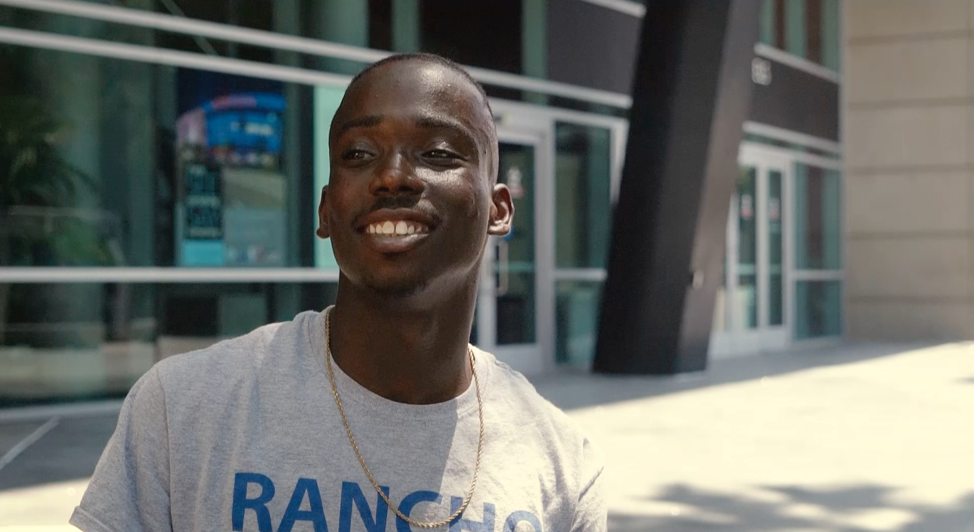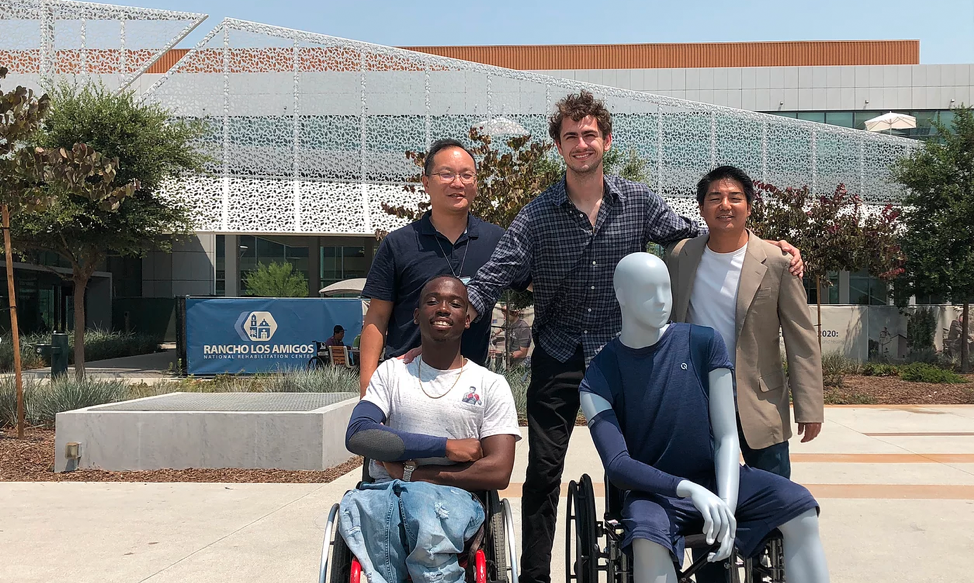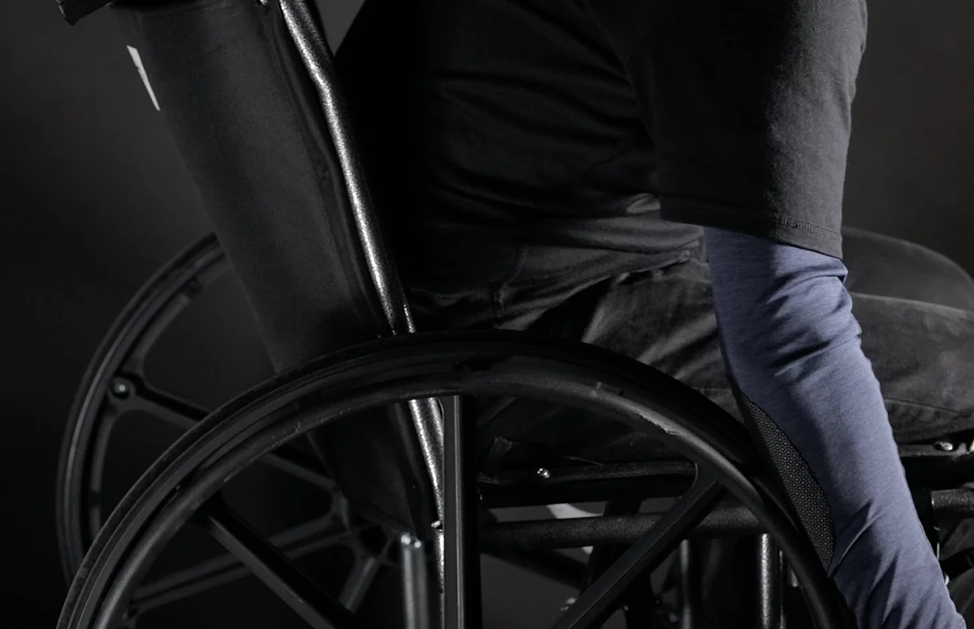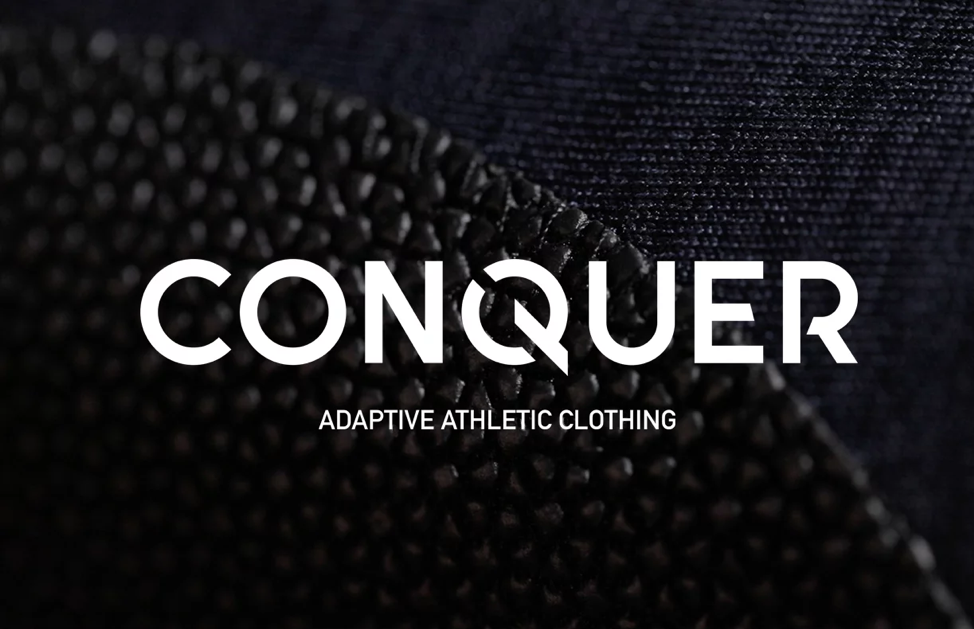I started a company to address the needs of thousands of physically challenged athletes whose needs have been consistently ignored. The following details how this journey began.
The mission of the Health and Wellbeing studio was to design for real people with real needs. Our instructor, Jeff Higashi created this class after developing connections with Rancho Los Amigos Rehabilitation Center. Our class met at the Rancho center, where we encountered Andy Lin, a Rehabilitation Engineer working for the last 20 odd years at the Center for Advanced Rehabilitation Trailer (the CART). A guru in the ways of Rancho, Andy creates unique solutions for Rancho patients in his lab. Andy was our ambassador, and helped acquaint us with the facilities at Rancho. We toured the facility and learned about the extensive equipment and machinery available to staff and patients. We demo’d the various styles of powerchairs, ultra-light wheelchairs, and watched practitioners operate hospital equipment. This was not your traditional classroom setting.
The first goal was to understand the spectrum of issues disabled people experience. This interpretation period is an integral stage of the product design process. When designers aren’t experiencing the problems themselves, they do a lot of listening and talking to people. Engaging practiced empathy is both informative and humbling.
We met up with a focus group where we asked questions and listened to individuals share their stories. One man, Ron, was particularly outspoken. Ron was a giant, affable man who suffered loss of motor control due to a stroke. Ron was a boxer before his stroke, now he is fighting against the misfiring between his brain and his nervous system, leaving half his body inept. He shared his frustrations with basic dexterity, such as opening water bottle or mopping the floor. Ron pushes ahead in spite of huge obstacles, still going to the gym to exercise. He is even employed at the gym he attends. The stroke continues to challenge Ron, but it has not killed his inner athlete.
How might Ron’s situation be improved?
My initial research focused on adaptive clothing. Adaptive clothing is clothing that has been modified to fit the specific needs of the individual. Lack of availability and industry focus have resulted in the disabled not having the same sartorial opportunities most have. Adaptive clothing options on the market are virtually non-existent. While exercise and fitness are key components in an individual’s improvement of their overall wellbeing, there was not a single athletic company adequately addressing these problems.
Following my meeting with Ron, I went to the Don Knabe Wellness Gym in Cerritos. There I had the opportunity to meet with the Rancho Renegades, a group of wheelchair basketballers bonded by their experiences at the Rancho Hospital, along with their coach Ray. The team practiced Tuesdays and had games on Saturdays. It was a summer night, and the gym was hot as the AC wasn’t working but these guys were playing hard. Ray has played wheelchair basketball for over twenty years and is an expert in wheelchair maintenance. Next to the bleachers, toolkits sat readily available for on-the-fly repairs and adjustments. Along with being the team mechanic, Ray is also an occupational therapist and truly understands the needs of his players. Wheelchair basketball is a tough sport, and the possibility of injury is high. Players would often crash hard and face down, requiring them to use their upper body strength to pop back up. For many of the players, their off-the-court problems seem to melt away once the game began. Being misunderstood, underestimated and pitied aren’t relevant issues when their singular focus is playing the game.

“It [being perceived as handicapped] bothers me something, but then I get on the court and prove what I’m worth.” – Josh Sowell (21) Long Beach, CA, Rancho Basketball Team
Problems on the court ranged from accessibility to functionality. Players tighten straps over their knees to prevent them from flying out of the chair during the frequent violent impacts of steel frames. One of the most troubling problems is sliding around in the seat while playing. I would occasionally notice an athlete adjusting their shorts. Traditional clothing is not designed to meet the needs for seated athletes, as polyesters and nylons easily slide on the seat. Also, players arms were often bruised and scratched from contact with the wheel, and the shooting sleeves and long-sleeve shirts of those wearing them were getting destroyed.
Taking into account these initial observations, Conquer was formed.
Conquer is an adaptive athletic clothing company providing solutions dedicated to empowering the athlete. Our patent pending technologies are applied to a variety of sportswear to improve performance.
GRIPWEAR shorts provide stability with enhanced grip to prevent shifting when making quick movements, as well as prevent the need for constant adjustments on the court. They also address breathability, and have the option of added padding for comfort. Magnetic closures allow for easy dress and hassle-free transfer.
WHEELWEAR provides the upper-body protection wheelchair athletes need. Areas or hotspots where the athlete comes in contact with unwanted friction are lined with a breathable, abrasion resistant fabric allowing for longer lasting shirts, sleeves, and armbands.
Athlete’s needs will always be varied, and our solutions will evolve with them. Conquer will empower those who may not have the benefits and opportunities most of us take for granted.
The problems I noticed were not just of the physical nature. There is a void in the market that serves these people and a need for better designed sports gear. Sports and exercise brings purpose to many people’s lives and it should not be so difficult for physically challenged athletes to obtain the equipment that is going to help them achieve their goals.
Thank you for reading, please check out more jgildea.com
Special thanks to:
Andy Lin, Oscar Gallardo, Randall Joe, Molly Josette Bloom, Christina Wolfe, Josh Sowell, Josephine Ho, Ray Cervantes, David Asuna, Rancho Staff


